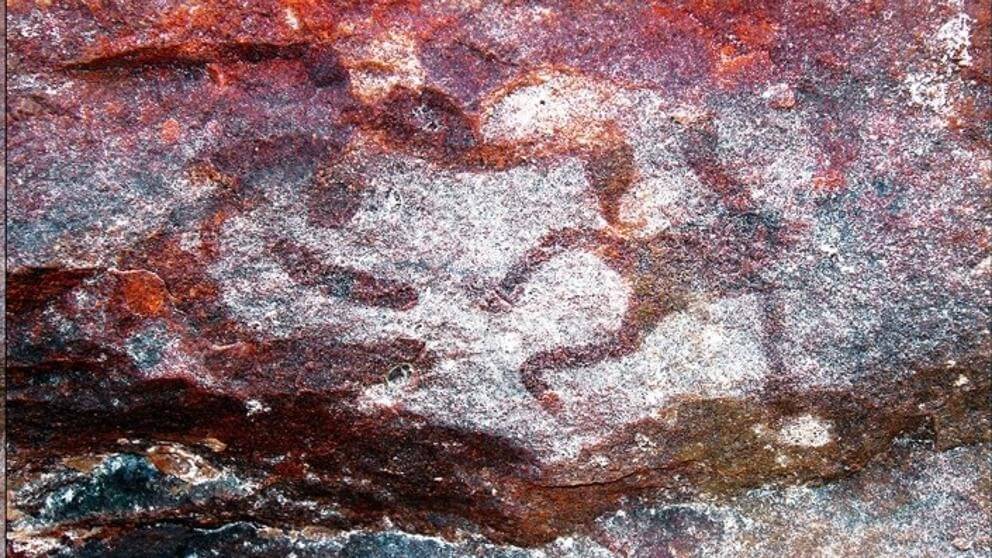
Archaeologists in Australia believe they have identified a previously undocumented beeswax stenciling technique used by ancient artists to create cave paintings.
Most rock art stencils are large in scale. Artists would place their hand or other objects on the wall and spray liquid pigment, creating a full-size negative image. But the artworks at a Limmen National Park site called Yilbilinji, in the Gulf of Carpentaria region of northern Australia, are much smaller. There are 17 tiny stenciled paintings at the site, some depicting human figures and animals, such as kangaroos and turtles, others of boomerangs and geometric designs.
Studying the 500-year-old rock art there, a team from Australia’s Flinders University and Monash University, have come up with a new theory about how Aboriginal artists created the miniature and small-scale stenciled motifs.
The team was able to replicate the mysterious miniature art using tiny models sculpted from beeswax, publishing their findings last month in the journal Antiquity. Representatives of the local Indigenous Marra people assisted with the experiment, which only used materials that are native to the region.
Three examples of the stenciled rock art, and one digitally enhanced image. Photo courtesy of Liam M. Brady, John J. Bradley, Amanda Kearney, and Daryl Wesley.
Anthropologist John Bradley pointed out that that people in the area traditionally used beeswax to make toys and for repairing spears and other tools, and raised the possibility that beeswax, or a similar kind of adhesive resin or clay, might have been used to make the small stencils. In attempting to recreate the artwork, researchers found that the beeswax worked the best.
“Heating and shaping beeswax into human figures, animals, objects, and geometric shapes, and then stenciling onto a rock slab confirmed beeswax was an excellent material for making miniature stencils,” the paper says.
Similar mini stencils have been found at two other sites, one in New South Wales, Australia, and the other on Kisar Island in Indonesia. The earliest known examples of Aboriginal rock art are 44,000 years years old.
Geometric stencils. Photo courtesy of Liam M. Brady, John J. Bradley, Amanda Kearney, and Daryl Wesley.
The researchers believe that the Yilbilinji artwork may have served a spiritual purpose in religious rituals. On the other hand, the artwork is placed low to the ground, suggesting it may have been made by children.
Either way, the paper notes, “the unique nature and quantity of the miniature and small-scale stencil assemblage at Yilbilinji clearly adds another dimension to both the Australian and the global rock art record.”